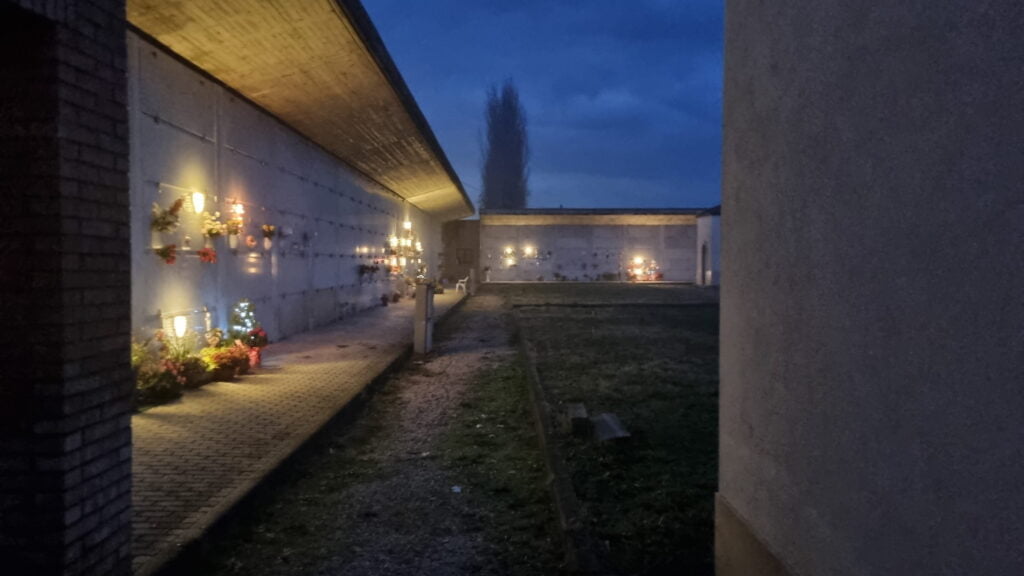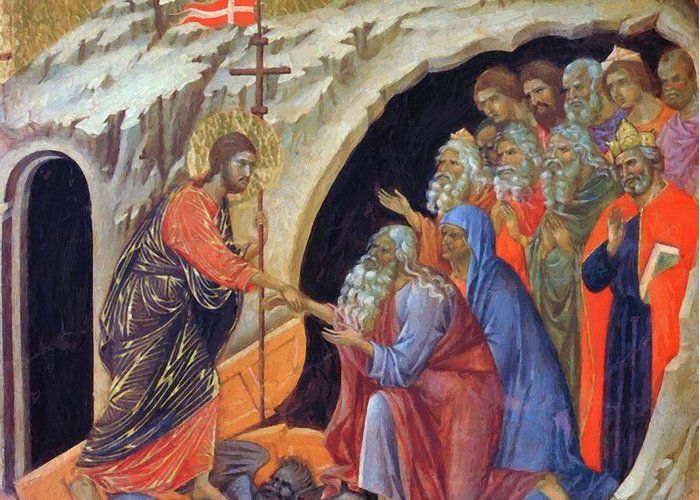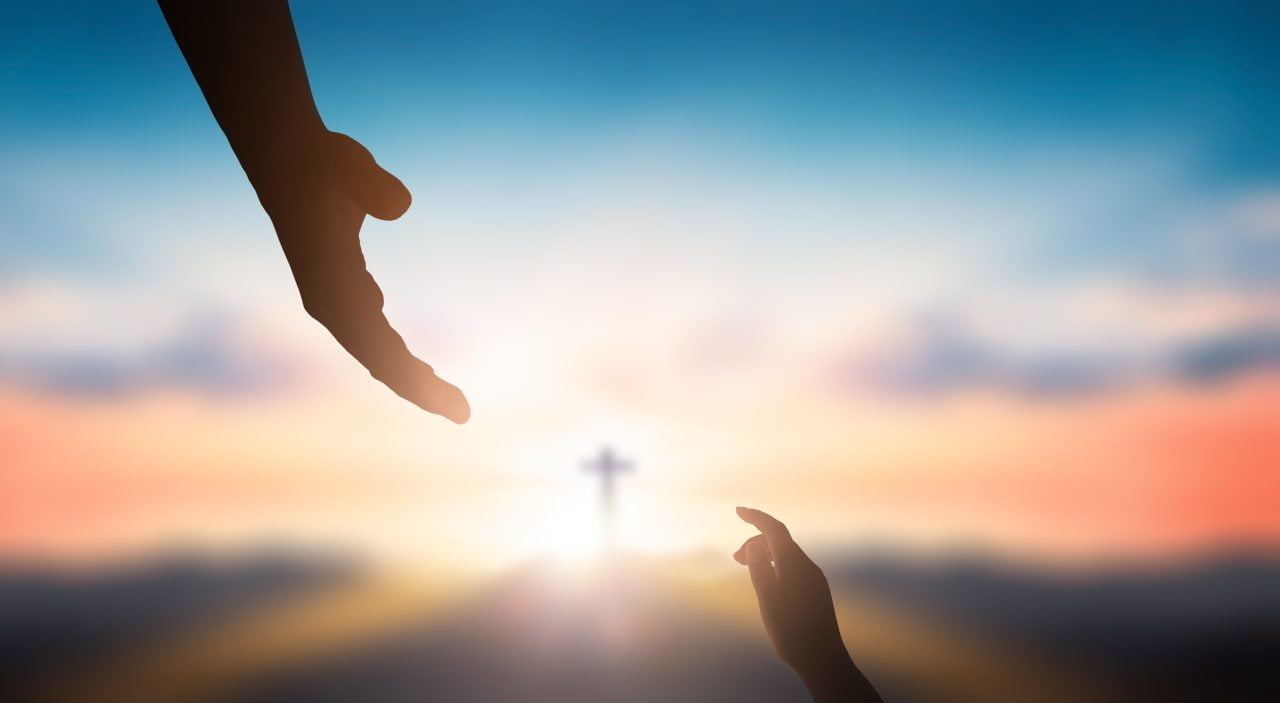Reading time: 7 minutes
Commemoration of all the faithful deceased
Summary
Already in the 2nd century there are testimonies that Christians prayed and celebrated the Eucharist for their deceased. At first on the third day after the burial, then on the anniversary. Then, on the 7th day, the 30th. The official year is 998, when the abbotOdilo of Cluny(994-1048) made this commemoration of November 2 obligatory in all the monasteries subjected to him. Benedict XV, in 1915, allowed all priests to celebrate multiple Masses on this day, on the condition that the offering remained only for one Mass. The liturgy offers various Masses on this day, all aimed at highlighting the Paschal mystery, the victory of Jesus over sin and death.
Text (taken from the first Mass)
“All that the Father gives me will come to me: he who comes to me I will not cast out, for I came down from heaven, not to do my own will, but the will of him who sent me.
And this is the will of him who sent me: that I should not lose anything of what he has given me, but that he should raise it up on the last day. For this is the will of my Father: that whoever sees the Son and believes in him may have eternal life; and I will raise him up on the last day"(Jn 6,37-40).
The will of God
The revolutionary message is that anyone “He sees the Son and believes in him he has eternal life... and I will resurrect him".
We know from experience that the body decomposes: but the body is not the whole man!
Man as a person is a partner in the dialogue with God, and He does not let it fall, he does not forget it, because God is faithful to his promises. God has written each of us in the palm of his hand, and he forgets no one, because He is the Father.
This is the heart of the message that Jesus left us. For this truth, Jesus became man, died on the cross and rose again: to make us participants in the joy of the resurrection: "Give them, Lord, and all those who rest in Christ, bliss, light and peace", we recite in canon I of the Mass, at the moment of remembrance of the deceased
Let yourself be surprised
It is certain that we will survive, Jesus told us!
We don't know how this will happen, we can intuit it by listening to the Word of the Gospel.
However, the hope remains that we can be surprised by God's goodness, by his mercy. We have our parameters, with which to measure the events of life, but we must leave God's parameters, which are not ours: and it will be precisely this that will surprise us once we cross the door of Heaven.
One step further
Dying is not disappearing, but being there in a new way.
It is knowing that those who preceded us are a "step further" on the path of life. He has reached the top, while we are still on the path of life; it is beyond the curve, while we are still along the straight. Death, therefore, is not the end of everything, but the beginning of a new life for which we have been and have been preparing for some time.
The commemoration of the deceased, then, is not just a "remembering" of those who are no longer present, but rather a bridge that awaits us at the end of life and which will lead us to the other shore to which we are all destined. Help not to let ourselves be drowned by many things, forgetting that everything passes, but God remains.
Sister death
St. Francis of Assisi, now reconciled with God, with himself and with creation, towards the end of his life he manages to reconcile himself even with death, so much so that he even defines it as "sister", a sign that for him too it was a mystery to be understood and welcome.
Unlike today's society, which tries in every way to hide the reality of death, deluding itself that it is eternal, Saint Francis teaches us to look at it, to understand it, to consider it a "sister", part of us. Ultimately, it is a fact as real as existence.
It is an act of intellectual honesty, even before a spiritual one. The fear of facing "sister death" is certainly dictated by the unknown, by not knowing what is beyond the "door", and this creates a certain discomfort. Secondly, let's not hide it, we fear the "weight" of our actions, because in the end we are all believers at heart, and at the end of our lives we ask ourselves how we lived.
This experience leads us to pray for those who preceded us, almost as if we still want to help and protect them, as well as asking to be helped and protected.
One thing is certain: we read death in the light of the resurrection of Jesus.
This is our strength and our serenity. He has opened for us the Way that leads with Truth to Life. Jesus himself reminded us that we are made for eternity: our thousand years are like a single day before God, and this short, fleeting time of life makes no sense if it is not projected towards a truer experience, like Jesus himself reminded us: “Whoever sees the Son and believes in him has eternal life".
One last thing. Jesus became man to help us live "from God"; he died, buried and descended into hell so that no one would feel excluded from his action of saving him.
So that I am not afraid and do not feel alone and abandoned, at the mercy of my fears, Jesus himself has chosen to "inhabit" every place, even the lowest, just to "keep me company" in that moment. There is no "space" of life and death that he has not visited, and this gives me the certainty that He will welcome me with open arms in whatever situation I "fall": both today into sin and tomorrow into death,
He is there. Because He has conquered sin and death and has prepared a place for me in the Father's House. This is enough for me to walk the path of life with trust and hope, “Even if I had to walk in a dark valley” (Ps 23), He is there.
And with me.
Prayer
Eternal rest give them Lord,
and may it shine upon them light perpetual,
may they rest in peace. Amen
Requiem aeternam
Réquiem aetérnam dona eis, Dómine,
et lux perpetual light is.
Requiéscant in pace.
Amen.
source © Vatican News – Dicasterium pro Communicatione

La pietas verso i morti risale agli albori dell’umanità. In epoca cristiana, fin dall’epoca delle catacombe l’arte funeraria nutriva la speranza dei fedeli.
In Rome, with touching simplicity, Christians used to represent the figure of Lazarus on the wall of the niche in which one of their relatives was buried. Almost as if to mean: just as Jesus cried for his friend Lazarus and brought him back to life, so he will also do for this disciple of his!
La commemorazione liturgica di tutti i fedeli defunti, invece, prende forma nel IX secolo in ambiente monastico.
La speranza cristiana trova fondamento nella Bibbia, nella invincibile bontà e misericordia di Dio. «Io so che il mio redentore è vivo e che, ultimo, si ergerà sulla polvere!», esclama Giobbe nel mezzo della sua tormentata vicenda.
Non è dunque la dissoluzione nella polvere il destino finale dell’uomo, bensì, attraversata la tenebra della morte, la visione di Dio.
The theme is taken up with expressive power by the apostle Paul who places the death-resurrection of Jesus in a non-separable succession.
The disciples are called to the same experience, indeed their entire existence bears the stigmata of the Paschal mystery, is guided by the Spirit of the Risen One. This is why the faithful pray for their deceased loved ones and trust in their intercession. Finally, they have the hope of joining them in heaven to join the elect in praising the glory of God.

source © gospeloftheday.org










Per Te Eugenio piccolo grande uomo 🙏❤️
Per Te Eugenio piccolo grande uomo 🙏❤️
🙏🙏🙏❤️